Innovating in the space in-between
How can we make food systems more sustainable? What is our role in creating change? These were the fundamental questions during the recent World Food System Summer School. The course brought together 24 participants from 18 different countries to explore sustainable food systems through an interactive and engaging learning program.
Understanding complex food systems
The World Food System Center Summer School recently took place from 17 August to 01 September. The first 10 days of the course were key for the 24 participants to gather a more in-depth understanding of world food systems. Even the location of the summer school, the Gut Rheinau, an organic farm in Switzerland, offered valuable insights. On the first day, Martin Ott, a director of biodynamic agricultural education of Switzerland, highlighted for the students that solutions for more sustainable food systems can be found in the “space in-between.” This “in-between” meant something different for every single participant: in-between conventional and organic farming; in-between stakeholders; in-between different academic disciplines; or even moving beyond academic disciplines to build on transdisciplinary knowledge and work between sectors.
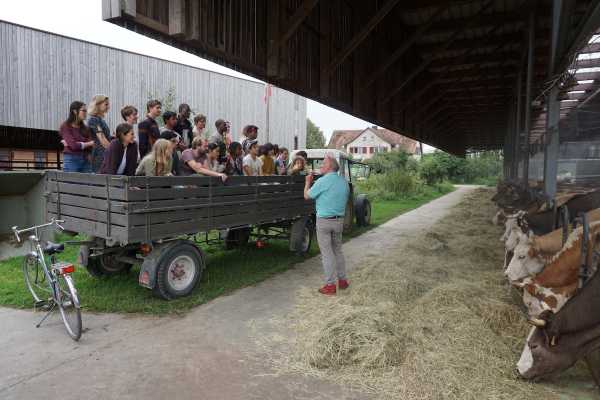 World Food System Summer School participants (Image: WFSC)
World Food System Summer School participants (Image: WFSC)
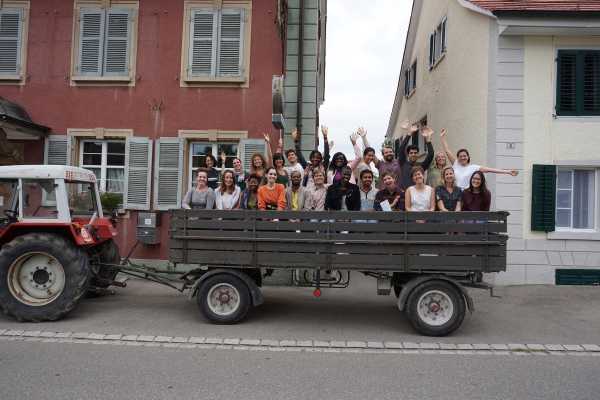 Weeding during a farm work session (Image: WFSC)
Weeding during a farm work session (Image: WFSC)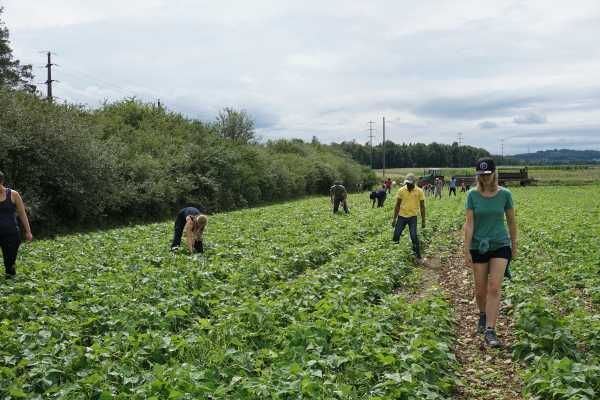 Visit to Tischlein Deck Dich (Image: WFSC)
Visit to Tischlein Deck Dich (Image: WFSC)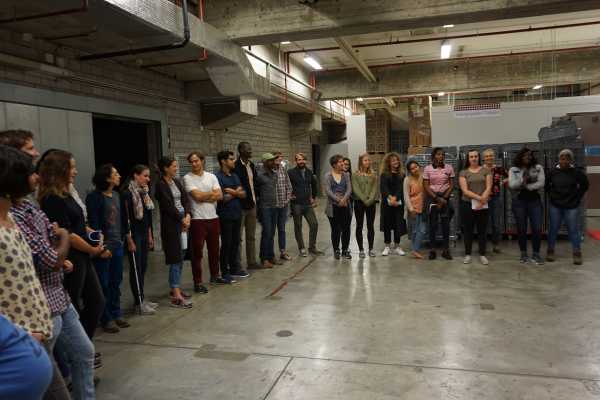 A shopping exercise where participants buy their own food as a family (Image: WFSC)
A shopping exercise where participants buy their own food as a family (Image: WFSC)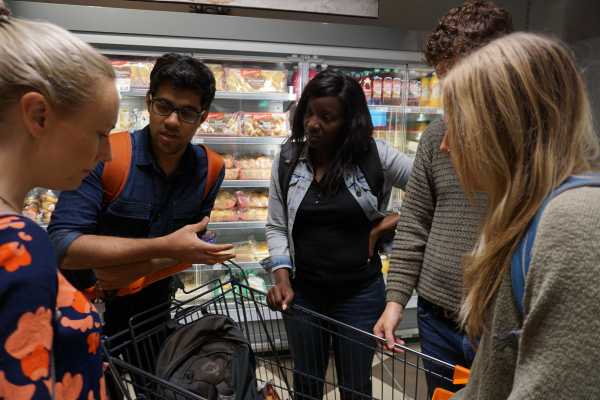 Excursion to explore alpine farming (Image: WFSC)
Excursion to explore alpine farming (Image: WFSC)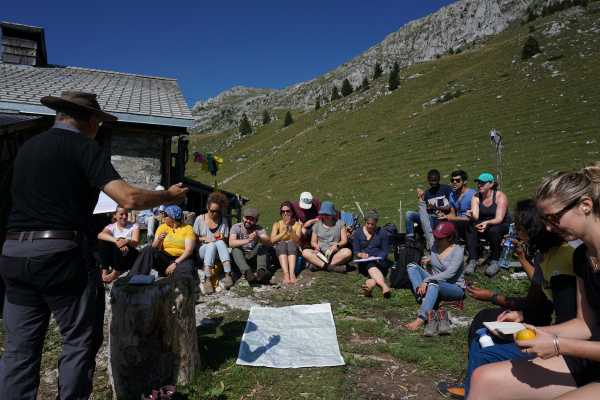 Entrepreneurs share their vision at the summer school (Image: WFSC)
Entrepreneurs share their vision at the summer school (Image: WFSC)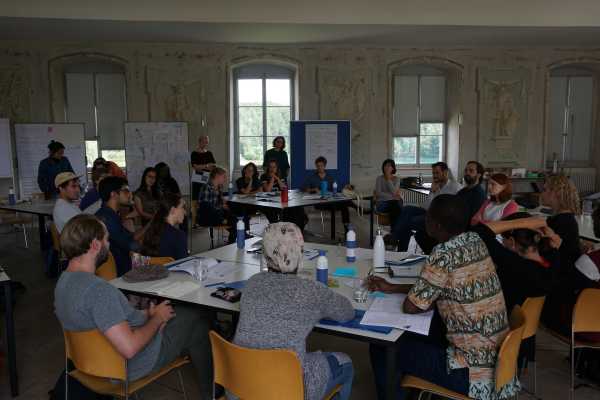 An organic fish farmer explains his work during the sensing journey (Image: WFSC)
An organic fish farmer explains his work during the sensing journey (Image: WFSC)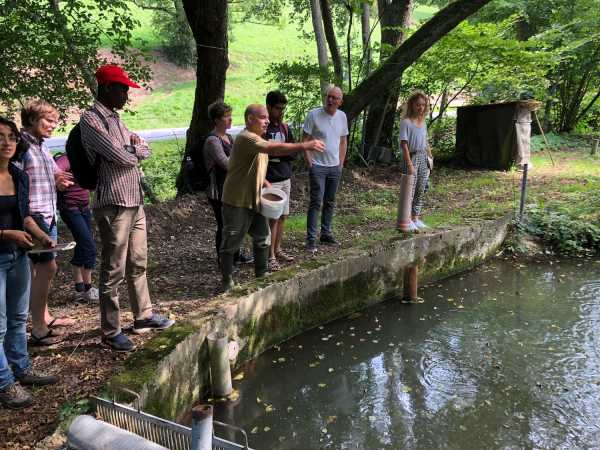 Tulsi, Katharina and Patrick are building sustainable regional food networks (Image: WFSC)
Tulsi, Katharina and Patrick are building sustainable regional food networks (Image: WFSC)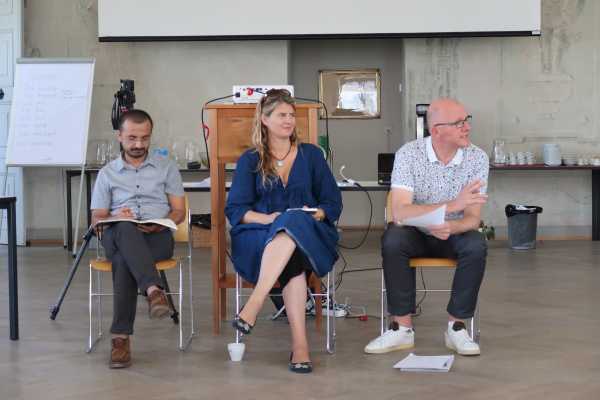 Learning a dance during cultural night (Image: WFSC)
Learning a dance during cultural night (Image: WFSC)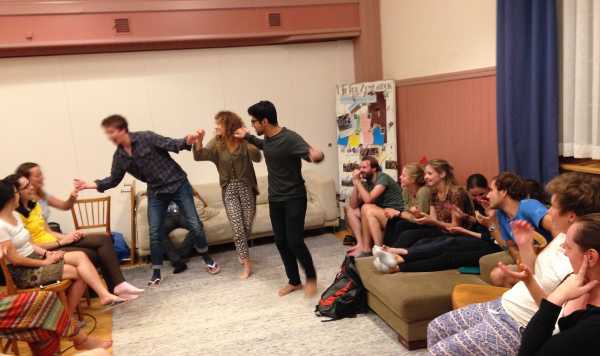 Groupwork in the sun in Rheinau (Image: WFSC)
Groupwork in the sun in Rheinau (Image: WFSC)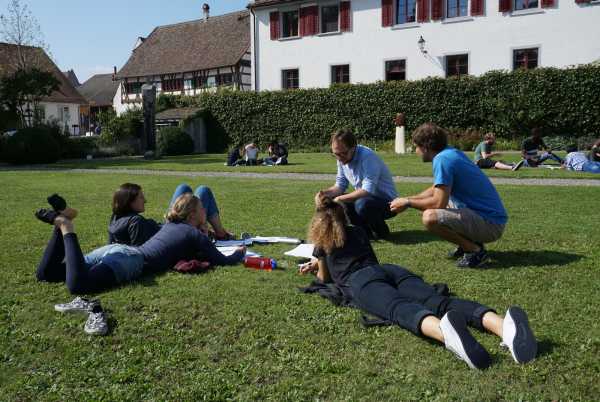
The course took participants through the different elements of the world food system. For example, in the session on nutrition and health, students learned about the impact of dietary habits on climate change and land use, with many implications for food and nutrition security. During farm work on an organic farm, they helped with weeding for four hours in the full sun. After everyone returned with back pain, the eye-opener for many was what it means to be an organic farmer, not use pesticides and hence, yes, doing all the weeding manually. The role retailers’ play became clearer during a visit to Zurich, where a visit to Tischlein Deck Dick introduced them to an organization that saves food from being wasted and distributes it throughout Switzerland to people afflicted by poverty.
Also, during a shopping exercise, students were divided into different families with diverse budgets, but also eclectic values and needs. Some required special diets for their health, others wanted only vegan or organically produced food. This led to complex choices and trade-offs. In a debrief of the exercise, Jenny Kunz, team leader of Sustainable Strategy & Project at Migros, one of the largest retailers in Switzerland, highlighted the limitations of labels and the steps large retailers are taking to contribute more to sustainability.
Four entrepreneurs of different start-ups shared their visions on how to create more sustainable value chains within food production. Students received insights on what policy and trade can do to confront pressing global challenges in food and agriculture. During a systems thinking and mapping exercise, it became very clear for the participants that systems dynamics are incredibly complex, as so many factors influence one another, leading to delays, accumulations and feedback loops.
During the weekend, the Swiss Alps were a highlight. The reality of Alpine farming struck the participants. “How do they carry all the material up here?” Back in the classroom, ETH Zurich professors gave an introduction into the history of agriculture, the global change drivers of climate change and biodiversity loss, and agroecology. Participants learned about the importance of soil and conducted diverse soil tests to check fertility through various tests. After an introduction to organic seed production, research on organic agriculture and a presentation of Biosuisse, a Swiss organic agriculture organisation, students were ready to dive into creating their own solutions to some real-world challenges.
Sustainable regional food networks
Patrick Honauer from Switzerland, Tulsi Giri from Nepal, and Katharina Serafimova from Portugal are building innovative sustainable regional food networks in their countries. Through their pioneering work, they are confronted with complex challenges. Patrick wonders how to factor in the social aspects of price in sustainable regional food networks. Tulsi struggles with the challenge of young people moving away from rural areas and wonders how to make it more attractive for young people to stay in farming for the long term. Katharina wonders what chances tradition and heritage offer to help build trust between stakeholders in a food network. The questions Patrick, Tulsi, and Katharina grapple with have no easy, clear-cut solutions. To even start thinking about a possible way out or alternative, one needs first a better understanding of the complexity of world food systems. It furthermore requires innovative, creative and inter- and transdisciplinary approaches to find possible break-troughs. These three case studies were hence the perfect basis for group work in the ‘Food Systems in Transition’ focused course. The diverse group of participants worked together to explore ways forward for the three real-world cases.
Prototyping solutions
The students, divided in four diverse interdisciplinary and intercultural teams, went through an adapted design thinking process. First they ‘empathized’ and developed a deep understanding of the challenge by going on a sensing journey with the three regional network builders and representative stakeholders. The teams then gathered all information within their groups and ‘defined’ a problem statement. Framing it as a ‘how might we’ question, it set the groups up to talk about innovative solutions. The next step was to ‘refine’ the problem statement through a stakeholder analysis, understanding who the key stakeholders are and how they interact with one another. In the ‘ideation’ phase, the students got a chance to think of solutions and design their intervention. Followed by ‘prototyping’, the details of the numerous interventions were fleshed out in real, physical models. Finally, the teams presented their solutions in short, creative, and interactive presentations.
Patrick, Tulsi, and Katharina were very enthusiastic about the proposed ways to create sustainable change and motivated to take these ideas to their communities and try them out in practice. More sustainable food systems start with small steps, finding solutions in the space in-between.
The road ahead
As the participants left the small farming town of Rheinau behind them, they shared their enthusiasm for the path ahead. Through the dynamic program and the socially-inclusive learning environment, they had built a deeper understanding of food systems, gained tools to navigate complexity, and explored how they wanted to play a role in creating change in a way that is aligned with their skills, values, and interests. As they join the active pool of 188 alumni from the course from 54 different countries, stay tuned to hear about the exciting initiatives they will create in the world!
Support:
This World Food System Summer School is part of the research project Delivering Food Security on Limited Land. This project is led by an international and multidisciplinary consortium of researchers from eight countries. The project is generously supported by national funding bodies, coordinated through the Belmont Forum and the FACCE-JPI Initiative. We are also grateful for the financial contribution by Mercator Foundation Switzerland.
Organizers:
The course is organized by the World Food System Center at ETH Zurich, in partnership with the Delivering Food Security on Limited Land research consortium. The Center works toward a vision of a healthy world through sustainable food systems. Our 42 professorial members from different departments engage in interdisciplinary research, education, and outreach together with partners from a variety of sectors.
Contact:
ETH Zurich World Food System Center
Monika Piessens, Education Manager
+41 632 33 92